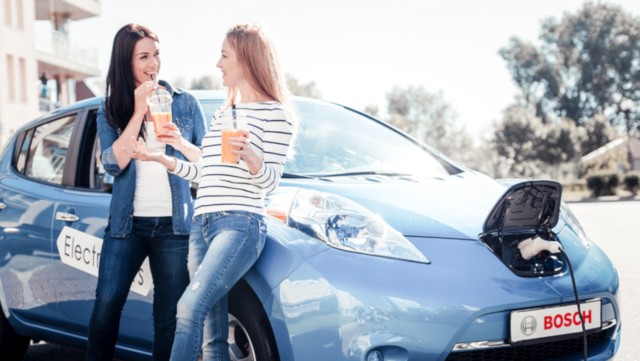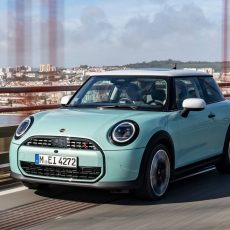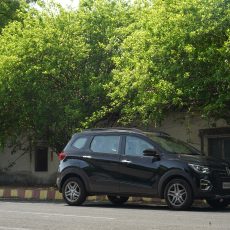Leading-edge evidence-based insights and consulting company, Kantar, have stated that 2030 will be the global tipping point for sustainable mobility in the world’s largest cities.

Image: Bosch Mobility Solutions; used only for representation of shared electric mobility
Kantar have found an interesting insight into the pattern developing on the path to sustainable mobility. With a complete, unique and rounded understanding of how people think, feel and act, globally and locally in over 90 markets, they combine the expertise of their people, data resources and benchmarks, innovative analytics and technology, to help their clients understand people and inspire growth. A new analysis predicts that the year 2030 will be the global tipping-point for sustainable mobility in the world’s largest cities, as per Kantar’s Mobility Futures study, which was revealed recently at the UN-Habitat World Urban Forum.
Kantar predict that private car journeys in the world’s largest cities will decrease by 10 per cent over the next decade. The rise of the sharing economy, multi-modality and autonomous vehicles, coupled with the ageing global population will all reduce the need for car ownership. This decline will be offset by increased use of public transport, cycling and walking, as citizens switch to more environment-friendly ways to commute and travel. By 2030, these greener means of transport will represent 49 per cent of all trips undertaken within cities, versus 46 per cent for cars – which currently account for 51 per cent. Taxi and ride sharing trips, along with other modes such as ferries will account for the remaining five per cent.
Cycling is on track to become the fastest-growing mode of transport, predicted to increase by 18 per cent between now and 2030. Walking and public transport usage will rise by 15 per cent and six per cent respectively. Thousands of infrastructure projects around the world, such as expansion of cycle lanes and bike-sharing schemes, pedestrian projects and public transport improvements are all contributing to these new mobility behaviours.
In this context, Kantar project that across the 31 cities surveyed, as many as 36.7 million city-dwellers will change the way they travel over the next 10 years. Manchester is set to see the biggest shift in transport usage, followed by Moscow and São Paulo.
The Top Transforming Cities by 2030:
|
Rank |
City |
Score |
|
1 |
Manchester |
184.9 |
|
2 |
Moscow |
183.4 |
|
3 |
Sao Paulo |
172.4 |
|
4 |
Paris |
160 |
|
5 |
Johannesburg |
157.3 |
|
6 |
Guangzhou |
154.6 |
|
6 |
Milan |
154.6 |
|
8 |
Montreal |
120.3 |
|
9 |
Amsterdam |
119.7 |
|
10 |
Shanghai |
118.5 |
Promoting and investing in technology for urban mobility will be key to facilitating the transition to smarter and more sustainable mobility and transport solutions over the next 10 years. Kantar’s research found that 40 per cent of people globally are open to adopting innovative new mobility solutions, but not all cities are ready for mobility transformation. The most tech-ready cities based on Kantar’s analysis of factors such as digital payment infrastructure, openness to sharing and autonomous vehicles, and GDP, are Amsterdam, London and Los Angeles.
What Infrastructure do people want?
To assess which emerging technologies and sustainable mobility solutions have the greatest potential to fulfil the needs of tomorrow’s urban travellers, Kantar have partnered with members of the Mobility Futures programme to develop and test over 20 mobility concepts against the preferences of 20,000 citizens globally. The innovations that resonate best are those that deliver both sustainability and convenience, including:
Mobility-as-a-Service (MaaS): This concept integrates multiple transport modes, such as buses, trams, bikes and car sharing, into a single app and ticket to streamline multi-modal travel into a user experience that matches the convenience of a personal car.
Mobility hubs: Located on the outskirts of cities, these hubs enable commuters to switch from polluting cars to zero-emission vehicles like electric buses, e-bikes and e-scooters, to help decrease urban congestion and pollution.
Autonomous parcel delivery: Self-driving delivery vehicles function as mobile parcel stations to reduce unsuccessful delivery journeys that significantly increase traffic congestion.
However, among the cities that are best prepared for the future of sustainable mobility, some are facing a lack of confidence from citizens in their municipality’s ability to actively shape a more sustainable future – which could potentially hold back progress. Berlin, Amsterdam and New York all demonstrate a clear gap between the cities’ readiness for change, and their citizens’ trust.
Guillaume Saint, Global Automotive and Mobility Lead at Kantar, said: ‘The coming decade will see a significant shift in the way people move around the urban environment, with a clear trend away from car usage towards greener modes of transport. Technology will be the foundation for shaping a more sustainable urban future. But all cities are different – what works in New York may not resonate in Tokyo – which is why it is imperative to put the human at the centre of the research to better understand and predict future mobility behaviour, and identify future opportunities.”
Rolf Kullen, Mobility Director at Kantar, added: ‘Cities around the world need to plan strategically for the evolving mobility needs of their population. For change to happen, it must be led by both the cities and the people – citizens will not act alone. Municipalities must mind the gap by balancing infrastructure investment with robust urban mobility policies and awareness initiatives to gain the trust and backing of their citizens. Our research shows there could be significant political upside for politicians who get urban transport right.’
Kantar’s Mobility Futures study surveyed over 20,000 city dwellers about their current travel experiences and desired modes of transport. It also comprised a series of panel discussions with 53 mobility experts from 14 countries who shared their perspectives on the findings and predictions. Learn more about Kantar’s 2030 forecast.
Also read: A Look at Future Propulsion




